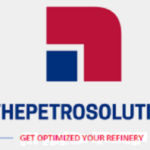Home › Forums › Petro Solutions Forum › Process Operations › Types of Oil Refineries
Tagged: conversion oil refinery, cracking, deep conversion oil refinery, distillation, hydroskimming oil refinery, reforming, topping oil refinery
- This topic has 0 replies, 1 voice, and was last updated 2 years, 8 months ago by
 Nasir Hussain.
Nasir Hussain.
-
AuthorPosts
-
-
February 5, 2022 at 3:53 am #2117
 Nasir HussainKeymaster
Nasir HussainKeymasterThere are four types of petroleum oil refineries, depending on the market conditions and the country’s regulations. Please view the blog about types and configurations of petroleum refineries; https://thepetrosolutions.com/types-configurations-petroleum-oil-refineries/
1- Topping oil refinery, 2- Hydroskimming oil refinery, 3- Conversion oil refinery, 4- Deep conversion oil refinery
1- Topping Oil Refinery
A topping refinery is the simplest refinery configuration that is designed to produce feedstock for petrochemical manufacturing plants or for the production of industrial fuels. However, the products are poorly refined because they lack the required downstream processing units to produce low-sulfur high-quality fuels. Crude oil is only separated into unfinished oils. These plants are normally, designed to meet the local market demands. It consists of tankage, a crude distillation unit, gases and light hydrocarbon recovery units and the necessary utility systems (steam, power, and water-treatment plants).
2- Hydroskimming Oil Refinery
Hydro-skimming refineries are also simple in configuration but are more complex than topping refineries. The Hydroskimming refinery consists of an atmospheric distillation unit, reforming and hydrotreating units. This type gets its name due to the addition of the Reforming unit because it produces hydrogen from hydrocarbon and high-octane gasoline.
A hydro skimming plant can produce refined products from little feedstocks as well as high-octane gasoline and hydrogen gas as a by-product. The addition of a few other functional units such as hydro-treating, hydro-cracking, and a few others to hydro-skimming refineries makes them more efficient than topping refineries.
The presence of hydrotreating units improves the quality of finished products as per local market demands. However, a hydroskimming refinery produces a surplus of unconverted oil with a relatively unattractive price and demand.
3- Conversion Oil Refinery
This is the most versatile and complex refinery configuration. A conversion refinery incorporates all the basic units that exist in both the topping and hydroskimming refineries. In addition, the refinery has residual oil conversion plants such as catalytic cracking and hydrocracking units, olefin conversion plants such as alkylation or polymerization units, and, frequently, coking units for sharply reducing or eliminating the production of residual fuels. These refineries convert residual refinery stocks into produce high-quality petroleum products.
4- Deep Conversion Oil Refineries
A deep Conversion refinery is a combination of all components of a conversion refinery and an additional unit known as the coking unit. The cooking unit makes it possible to treat and convert extremely heavy crude oil fractions into lighter products. Further, a deep conversion refinery also converts the gases or any other hydrocarbon feedstock into petrochemicals.
-
-
AuthorPosts
- You must be logged in to reply to this topic.